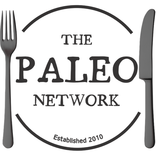My $50 weekly paleo budget challenge
When I returned from my trip overseas, I went to my local Coles grocery store to get a few essentials to keep me going. I came out with one bag and $52 worse off. All I bought was a few veggies and some meat.
Now I'm working for myself (more on this soon) something has to change! It's important to me to continue eating well, but I've got to cut my food costs. I've therefore spent the last few weeks doing a $50 weekly food challenge. Where I live in Australia, this is quite a challenge. Food is expensive here. Before I started this challenge I'm ashamed to say I had no idea how much different vegetables and cuts of meat cost.

It's not been easy, but I've managed to stick $50 a week – and I've kept it paleo. Here's what I've been doing:
Shopping around
I'm lucky to live near an independent greengrocers, a butcher, an Aldi and a Coles supermarket. When I worked in the corporate world I would do almost all of my shopping in Coles because it was quick and easy. Now I incorporate all three in my daily morning walk, so I can check out the prices and see what's in season and on special offer. As I walk, I don't buy much each time I go and I make sure I'm always getting the best price. It's amazed me how much prices differ for the exact same vegetables – perhaps even from the same farm! For example I can get a whole cauliflower for $2 from the greengrocer. Or spend $3.98 on a cauliflower at Coles.
Look for specials
I've noticed every few days there are different specials in my local Coles. This week for example, Broccoli is on sale for $1.oo a kilo (2.2 pounds). It would normally be about $3 a kilo – so this is incredibly cheap. I therefore have a fridge full of broccoli at the moment – and am on the look out for broccoli recipes to use it all in! I always keep my meal plans flexible enough to take advantage of good deals like this.

Buy reduced to clear
I've also noticed everywhere I shop has reduced produce every day. I've got some great deals on packets of vegetables on their “use by” date and significant reductions on meat too. I cook fresh everyday, so it makes no difference whatsoever if it's close to the use by date.
Buy different cuts of meat
I used to buy (what I now realise are) premium cuts of meat and poultry. I'd spend $10 buying two chicken breasts – I now buy a whole chicken for about the same. Not only do I get two chicken breasts, but I get the rest of the bird – and a couple of extra meals out of it for free. It's so easy to roast a chicken.
Buy nutrient dense
With $50 to spend I don't bother buying things like lettuce, which I don't consider very nutrient dense or filling. Instead I'd rather buy veggies like kale and spinach that give far more nutrients per cent.
Buy seasonal
I used to buy avocados all the time. I didn't really look at the price. They're $2.98 EACH! I don't buy avocados at the moment. As soon as they are in season and the prices become more sensible, I'll add them back into my diet.

Try a different way
I've also started doing a few things differently. Instead of buying expensive dark chocolate, I buy a few grapes when they're on special and freeze them (if you've not tried frozen grapes – do this!). Instead of using coconut oil to roast veggies in or cook a stir fry with, I use the fat I get from the meat I cook.
Don't compromise
I'd save so much money if I bought barn eggs and cheap ground mince meat. But there are some things I won't compromise on – I won't buy ground meat or non free-range chicken or eggs. I'd love to buy all of my vegetables organic, but I just couldn't do that for under $50 a week unfortunately.
Stretch everything
Everything I buy, I try to stretch as far as I can. The chicken I roast will do several meals, then the bones will make a stock. I add yesterdays stir fry leftovers to some eggs to make a frittata for breakfast. I make my extra veggies into a soup and freeze it in batches for later.
I'd love to hear any tips you have for getting more out of my $50 weekly food budget. How much do you spend on food each week? I'd love to hear your views in the comments below.





































